#mixtec
Explore tagged Tumblr posts
Text

~ Pair of Earrings.
Culture: Mixtec
Period: Postclassic
Date: A.D. 900-1520
Medium: Gold, turquoise
#history#museum#archeology#archaeology#jewelry#10th century#16th century#mixtec#Postclassic#gold#turquoise#pair of earrings#a.d. 900#a.d. 1520
971 notes
·
View notes
Text
Na'yivi - Person

Nayivi means specifically "Person" My grandparents say it doesn't have to mean "Homo-sapien" or "Human being"
A tree could be a Nayivi as much as a human being could, and I like that distinction.
A strange alien creature could come from the skies or from beyond the stars and could be respected and as beloved a person all the same.
Its a sweet thought.
Next page: Itchi - Path
167 notes
·
View notes
Text
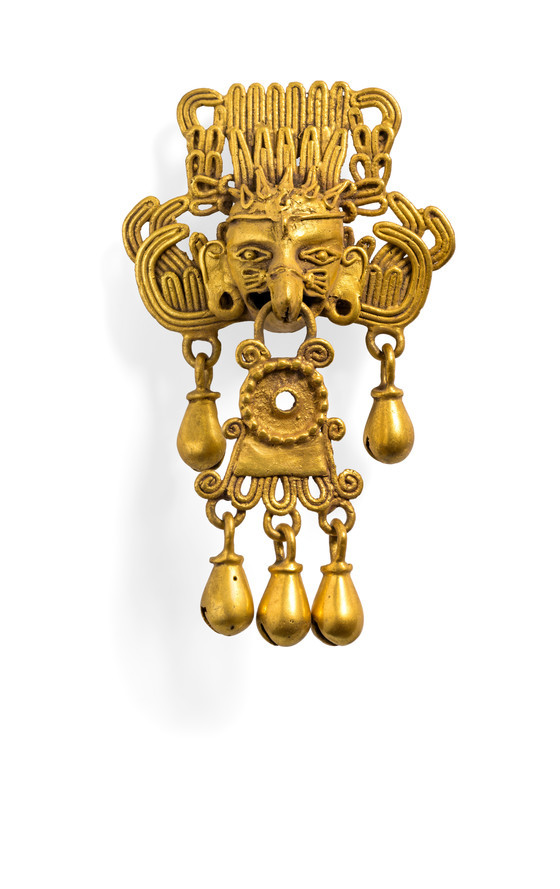
Gold pendant, Mixtec, 1100 - 1500 AD
from The LA County Museum of Art
251 notes
·
View notes
Text

Pair of Earrings
Mixtec, Postclassic, 900-1520 CE
To the Aztecs, the hummingbird was revered for its association with the Mexica tribal patron deity, Huitzilopochtli, “Hummingbird on the Left” or “Hummingbird to the South,” who oversaw their journey to Tenochtitlan from their mythic homeland, Aztlán. In establishing Tenochtitlan, the Mexica honored Huitzilopochtli with one of the two temples atop the pyramid of the Templo Mayor in the main ritual precinct of Tenochtitlan. Few sculpted images of this deity survive, and in the documentary sources he is often depicted as a priest or impersonator wearing a hummingbird helmet and a costume appropriate to the god.
346 notes
·
View notes
Text

On the year 4 reed day 2 house descend Lord 1 Movement (Yya Caa Qhi; the Mixtec Xolotl), the Morningstar and Lord 1 Death (Yya Caa Maha; the Mixtec Tonatiuh), the Sun descend down to the Hill of Jade and Gold.
Two strips capped with jade appear on the mountain, one with gold pectorals and the other with jade beads.
On the left Lord 1 Movement holds an atlatl and shield. His lower jaw is fleshless.
On the right Lord 1 Death also holds an atlatl and shield. He has the solar symbol on his back.
One of them (most likely 1 Death who is lord of the Temple of Jade and Gold) threw a dart at the hill breaking it open allowing Lord 1 Water Ballcourt Smoke to be born. Although he is not shown here the red line emerging from the hill is an umbilical cord connecting to 1 Water.
41 notes
·
View notes
Text



Here's some mixtec stuff!!!
57 notes
·
View notes
Photo
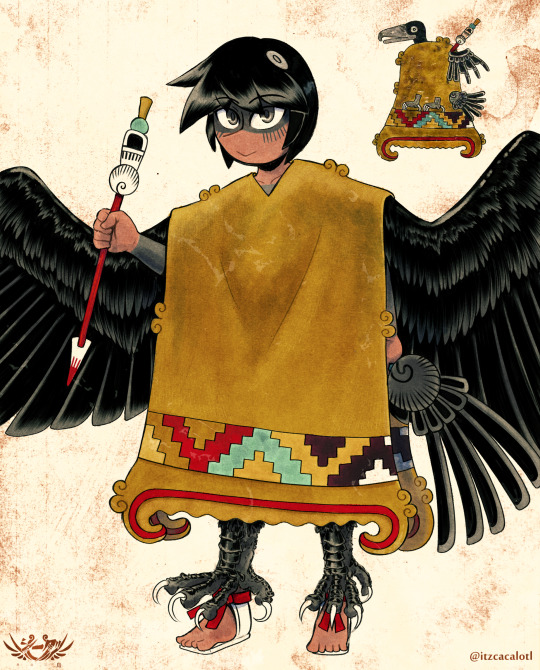
Itzcacalotl cosplaying as the glyph of a place named Cacalotepec ("Crow Mountain"), from the Codex Nuttall.
204 notes
·
View notes
Note
Are you still doing grave gold? If so, hands and neck please! I need design inspo
I am always doing Grave Gold. I love appreciating the craftsmanship of the folks who came before us. (Also, whoo shiny things!)

Why just have one ring when you can have a DOUBLE RING. This interesting find is a Late Roman ring (3rd-5th c. C.E.) and features two emeralds and a garnet.

This gorgeous necklace is Mixtec (est. 1325-1525 C.E.) and was made in the region that's now Oaxaca, Mexico. It's composed of gold beads made to look like jaguar teeth and little gold bells. It's located at the Met Museum in New York City.
11 notes
·
View notes
Text

Mask of the rain god Tlaloc
Mixtec (modern state of Oaxaca, Mexico); c. 1300-1500 CE; stone, turquoise, and shell; 13.5 x 11.5 x 5.5cm
Currently in the collection of the St. Louis Art Museum (St. Louis, Missouri, USA), accession no. 96:1968
#archaeology#art#isaac.txt#indigenous#american archaeology#native american#mixtec#st. louis art museum#pre columbian
14 notes
·
View notes
Photo
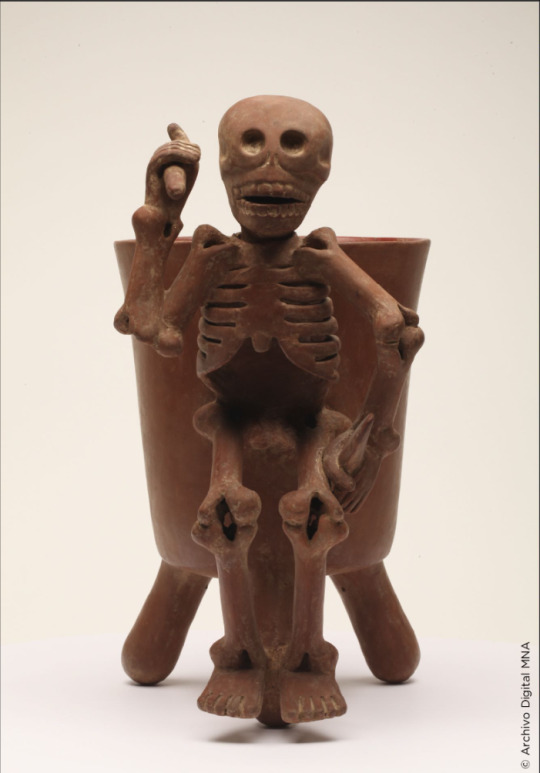
#Mixteca#Mixtec#Mixteco#Mexico#indigena#muerta#calavera#indigenous#pottery#vaso#cup#skeleton#death#prehispanic#prehispánico#mesoamerica
97 notes
·
View notes
Text

Important, but also the racism came out here in this reply I got:

Like wtf is this person's problem. Can't even see indigenous people take pride in their roots without being racist, smh. Really be here using the derogatory and racist "indio," huh. Just proves the point in the TikTok. And the worst part is they are part of different minority groups and decide to act like a clown:

Proud indigenous Zapotec forever 🇲🇽
Fck racists and racism.
#🇲🇽#this clown also said they were northern mexican and are superior to 'indios' so this racism in mexico against indigenous people also needs#to be addressed and talked about#racism#mexico#native#indigenous#oaxaca mexico#puebla mexico#mixtec#zapotec#discrimination against mexicans
20 notes
·
View notes
Text
Noô - Face

Noô!!!! sounds exactly like Nuu!!! or city!!! I used to think they were the same thing, and worked as like a metaphor for like how places are full of faces too! human faces, and maybe other faces too. Except the last O in NOO is on a lower tone! pronounced relatively lower in the throat than the first O which is a "Mid" tone! Try it... You just spoke a tonal language!
Next page: Na'yivi - Person
176 notes
·
View notes
Text
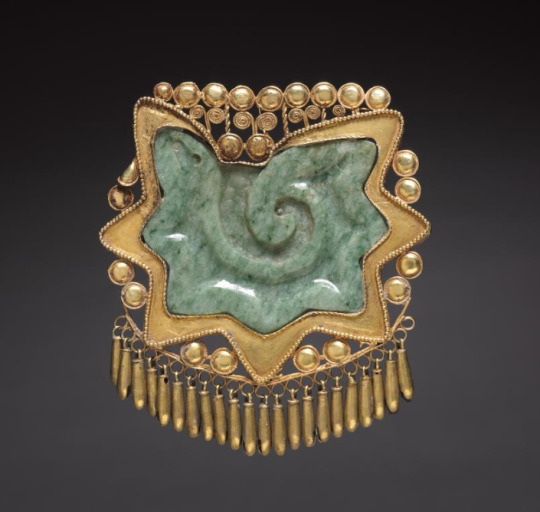
Gold and jade pectoral, Mixtec, circa 1200-1519
from The Cleveland Museum of Art
974 notes
·
View notes
Text
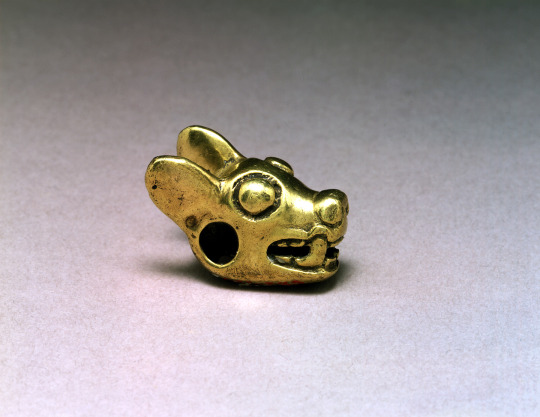
Bead in the Form of an Animal Head Mixtec, Postclassic, general, 900-1520 CE
The coyote had a dual identity in the Aztec mind, one with rather more sinister implications. It was respected for being cunning, astute; in hunting it is quite as astute as a man. But it is in every way diabolic, exacting revenge for being thwarted in its pursuits, but also fair-minded, and could be grateful and appreciative by repaying an act of kindness with its own sort of generosity. It seems fitting that the greatest of all Aztec kings was named Fasting Coyote (Nezahualcoyotl in Nahuatl; ruled Texcoco ca. ad 1433–72). As his name implies, this king was astute and cunning, and a survivor as a long-term ally of his cousins, the rulers of Tenochtitlan. This small ornament may represent a coyote, and would call to mind the great fifteenth-century ruler.
169 notes
·
View notes
Text
Listening to my very old great grandma talk about how hard the Spanish tried to get her to stop speaking mixtec really hurts man
Like they did kill children here too, they starved beat and tortured them
My grandma refused to speak Spanish and she literally forgot to,
That's something of a miracle I can hear her mixtec, it's so beautiful and it really does sound like music.....
Her words survived a Genocide, and I can hear it now!!!
13 notes
·
View notes